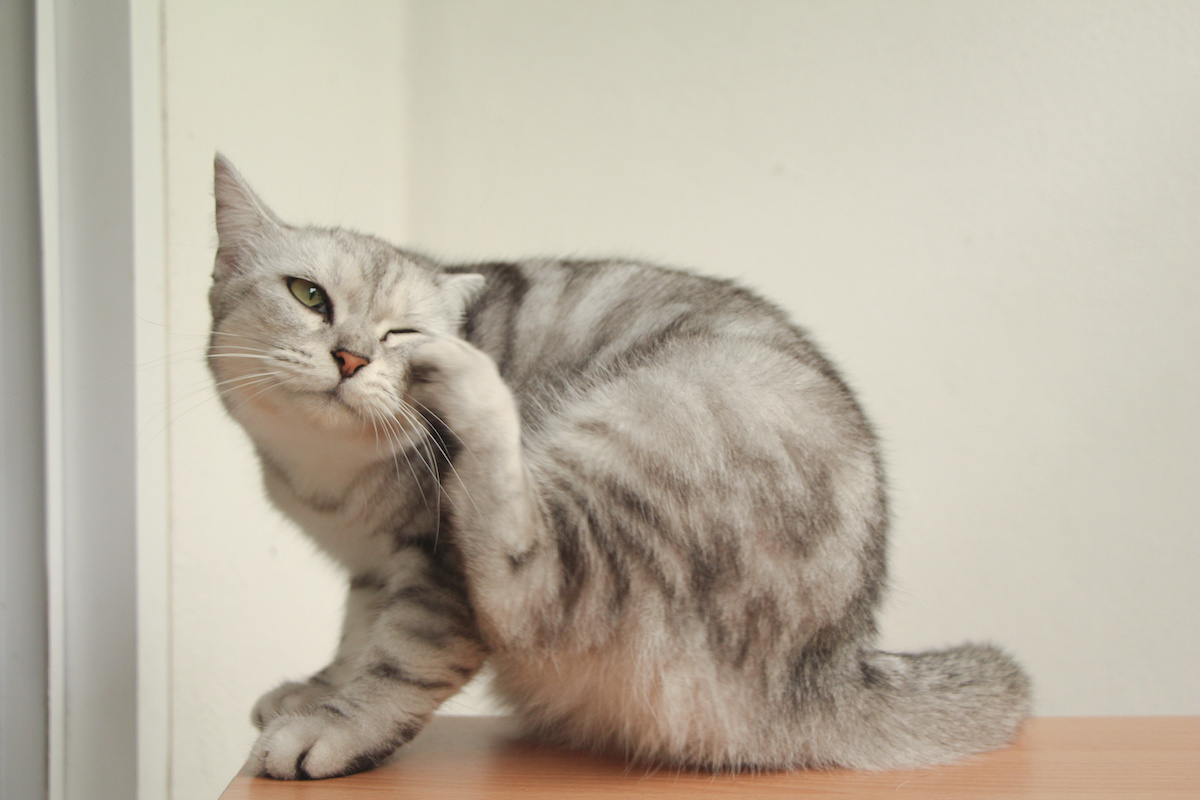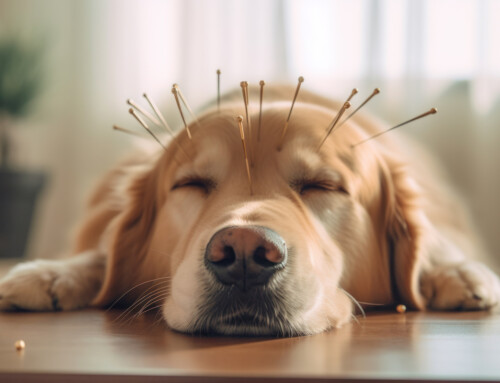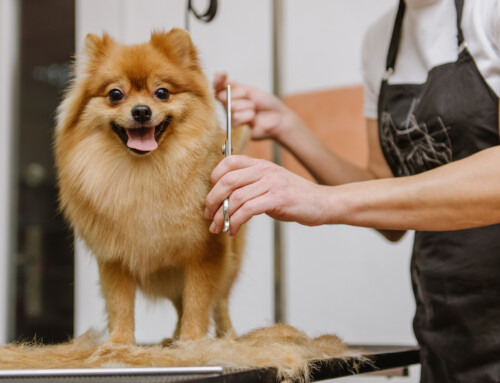As one of the leading causes of pet allergies, fleas are a common problem for dog and cat owners alike. No one wants to see their cat or dog furiously scratching as fleas bite and feast on their blood. Not only are fleas miserable for your pets, but they can wreak havoc in your household as well. The good news is that there are numerous ways to prevent and get rid of fleas if you have them. Read on to find out how to identify the signs of flea infestation, prevent infestations in the first place and what to do if you already have an infestation in your home.
First, let’s define fleas and what you might expect to happen if they get inside your home.
What are Fleas?
Fleas are tiny little insects that live in warm, moist areas and feast on the blood of animals. Cats, dogs, and humans are at risk of being bitten by fleas, and fleas can even bite chickens, rabbits, and other pets. Fleas can carry diseases such as typhus and tapeworm, so it is important to make sure that no fleas live in your home.
While flea season typically runs April through November here in Georgia, you can have a flea infestation any time of year. The worst part is that fleas are notoriously difficult to get rid of because of their life cycle. You cannot only eliminate adult fleas to get rid of fleas entirely—you must eliminate the eggs and the larvae as well.
The Life Cycle of Fleas
What is the life cycle of fleas? Although the common flea spends most of its time on your pet, it also must feed on blood from time to time to survive. Most fleas pass through three stages of development: egg, larva and adult.
Eggs and Larvae
Flea eggs are laid by the female flea on the pet or in the surroundings. The eggs are oval in shape, white in color and about 1/32 inch long. Flea eggs can hatch in about two days into larvae. The larvae feed on organic matter present on the pet. The complete development from egg to adult is about 1-2 weeks.
Facts about flea eggs:
- Flea eggs are laid on the pet or in the environment.
- The eggs are oval in shape, white in color and about 1/32 inch long.
- The female can lay nearly 50 eggs per day
- The eggs are sticky and will adhere to the hair, skin or furniture where the pet rests.
The Growth Cycle
The life cycle of a flea only takes a week from the time the flea hatches to the time it turns into an adult. During the larvae stage, the flea will only remain here for about 3 days. The next stage is the pupa stage, which usually is about a day long. The adult flea only lives from 2 to 4 weeks. The adult flea is more than capable of reproducing within a few hours of hatching.
As you can see, it’s no wonder why fleas are so difficult to terminate. Their life cycle makes them aggressively populate, while nearly invisible eggs go unnoticed until they are adults biting your pets.
Signs of a Flea Infestation
A flea infestation is physically and mentally taxing on both you and your pet. Knowing the signs of a flea infestation is critical for the well-being of your entire household. But what are the signs of a flea infestation?
- Undisturbed fleas on the skin of your dog or cat are one indicator that you may have a flea infestation.
- Also, you may notice that your dog or cat is scratching excessively.
- If you observe a small, black speck on your pet that resembles a salt crystal it could be flea dirt.
- Flea dirt is the result of the fleas ingesting your pet’s blood.
- The most obvious sign of a flea infestation is the physical appearance of the flea. You’ll notice small, brown-black insects that are about the size of a grain of rice.
Flea Prevention Tips
Now that you understand how the flea grows and populates, prevention is the best course of action to get rid of fleas. But how do you prevent fleas in the first place?
Because fleas are so prevalent, you need to have a preventative system in place. This means keeping all pets on a preventative program. This almost always means all “inside” pets. This means your dogs and cats. Cats, of course, don’t even have to go outside to pick up fleas from outside.
Meanwhile, some flea prevention tips include:
Keep Your Home Clean
There are a few things that you can do to prevent fleas: The obvious, keep the inside of your home clean and free of clutter. This will prevent fleas from setting up shop and coming inside. Vacuum the floor and carpeting frequently, preferably every day.
Be Sure to Vacuum Regularly
You should also vacuum furniture, pet beds, and even your car when it comes to flea prevention. Vacuuming the house once a week should be the minimum that you do to keep the fleas at bay. Be sure to empty the vacuum bag or canister to dispose of eggs that you cannot see. Vacuuming will take away fleas that are already on your pet’s coat and possibly prevent any fleas from landing on their coat.

Check for Fleas Routinely
The last thing you want to happen is for fleas to take you by surprise. If your pet spends a lot of time outdoors, you’ll want to comb through their fur several times each week to check for the presence of fleas, flea bites or flea dirt.
Get Your Pet Groomed
Regular grooming can help care for the health of your pet’s skin and coat. Be forewarned that grooming a pet with fleas will likely not get rid of the problem, but this preventative care is good for their overall health.
Keep Your Yard Clean
Did you know that a dirty, unkempt yard can attract fleas? Fleas are looking for a warm, moist area to set up their nurseries. They crawl into your yard looking for a safe place to deposit their eggs, looking for tall grass and brush. Fleas also seek areas with a lot of shade, because shade makes the area around your yard less likely to freeze. Fleas also don’t like a lot of wind. They prefer to be in a sheltered environment.
This is why yard and lawn maintenance is important no matter the time of year. You don’t want to give fleas and even ticks a comfortable place to call home.
How to Get Rid of Fleas
Wondering how to get rid of fleas? Even our best efforts at prevention can sometimes fail. If you have fleas in your home, there are several effective ways to get rid of them—but beware this is going to take a lot of effort and patience.
Getting Rid of Fleas with Household Products
There are several household products that work as flea control. It’s important to understand, however, that these products will provide mild control only, and the effects are short-lived. They’re fine for flea control around the house, but for anything more than mild infestations, commercial products are necessary. Unless you have a small, contained problem, flea powder or spray will be necessary.
These include dishwashing liquids, Borax, bleach, baking soda, and alcohol. Do not apply any of these products to your pet’s skin other than Dawn dish soap. Please call us if you plan to proceed with this.
Again, it is important to know that there are a variety of products on the market. Some of them may simply mask the problem, rather than eradicate it. It is wise to consult a vet before proceeding with any non-prescription treatments. When trying these household treatments, it is important to keep in mind that it can take up to a week for them to work.
Using Flea Shampoos and Powders
However, if you’ve tried flea shampoo on your dog, flea powder on your cat, and flea spray on your yard, and you’re still fighting fleas, you might need to try something stronger. If you’ve got a serious flea infestation, you’re likely to find that these options alone don’t do enough to get rid of fleas. In these situations, your veterinarian might recommend a prescription flea medication like Capstar or Advantage Multi, or a stronger flea shampoo or flea spray. These are all good options, but they’re expensive, and if you need to use them frequently, they begin to seriously add up.
Flea Exterminator
When do you need to call in a flea exterminator? The best time to contact a professional pest control company is when you see an infestation of fleas in your home. You may think that fleas are not that much of a problem and that natural home remedies will be able to get rid of them. Unfortunately, most of the time these remedies don’t work at all and you will have to call in a professional pest control company.
Pest control can be pricey, but the fact is that it’s the most effective way to get rid of fleas in addition to flea prevention.
Do you need help with flea prevention? Please contact our office and we can help you choose the best flea prevention medications for your pet








